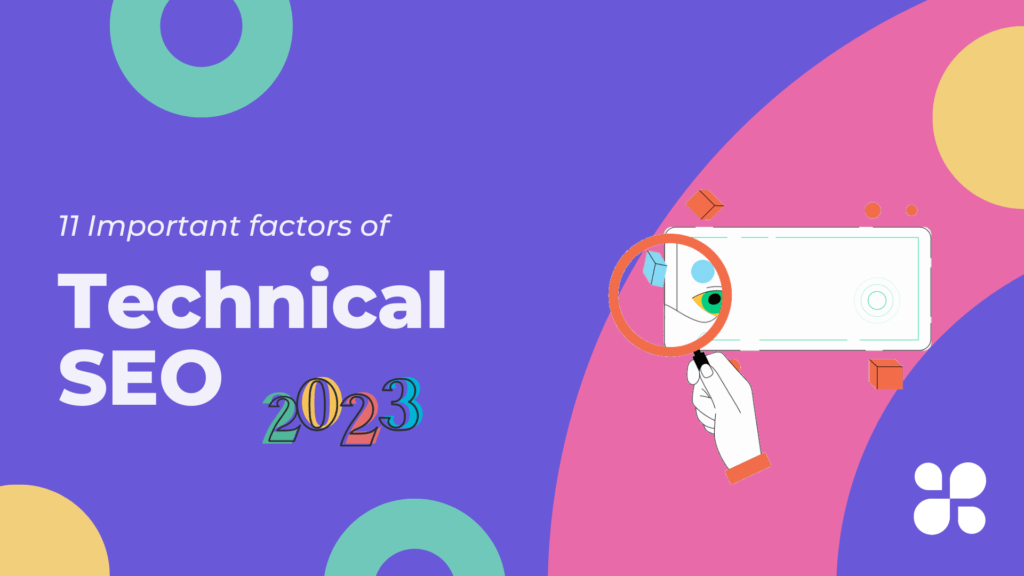Search engine optimization (SEO) is the process of improving a website’s rankings in search engines like Google. The goal is to have your pages appear higher in the search results for relevant queries. This increases your site’s visibility and brings more organic traffic from search.
Traditionally, SEO involved a lot of manual work – optimizing page content, building backlinks, fixing technical issues, etc. But now, much of this can be automated using what’s called “programmatic SEO.”
What is Programmatic SEO
Programmatic SEO refers to automating SEO processes and tasks by using software tools and scripts. The goal is to systemize and scale SEO activities to improve efforts and save time.
Examples of programmatic SEO
- Automated website crawling and auditing to identify SEO issues
- Automated on-page optimization like meta tag generation and image optimization
- Automated link building and outreach to build backlinks
- Automated rank tracking and performance monitoring
- Automated report generation to analyze SEO data
So in simple terms, programmatic SEO employs technology to automate repetitive, scalable tasks involved in SEO. This allows you to focus your time on high-level strategy and expansion vs doing mundane repetitive work.
Benefits of Programmatic SEO
Adopting programmatic SEO offers several advantages:
- Saves time – Automation handles tedious tasks faster than humans could. You save hours that can be reallocated to high-value work.
- Scales efforts – Software tools can audit, optimize, monitor thousands of pages easily. This lets you expand SEO to more site content.
- Improves consistency – Bots perform tasks consistently without getting bored or distracted. This boosts technical SEO accuracy.
- Provides insights – Automated reporting reveals actionable SEO insights you can use to refine strategy.
- Reduces costs – Automation requires less manual human effort and oversight which reduces long-term costs.
- Frees up team – Your SEO team spends less time on repetitive work, allowing them to focus on strategy and innovation.
Common Programmatic SEO Tools
There are many software tools available to automate various SEO workflows:
- Website crawlers – Crawl and audit sites to identify SEO issues like broken links, metadata, etc. Examples: ScreamingFrog, Botify, DeepCrawl.
- Rank trackers – Track keyword ranks in search engines to monitor performance. Examples: SEMrush, Ahrefs, Serpstat.
- Link building tools – Automate outreach and build backlinks at scale. Examples: Pitchbox, Buzzstream, GroupHigh.
- Image optimizers – Optimize images with proper names, alt text, compression. Examples: Kraken, Optimole, Shortpixel.
- Analytics – Provide deep site analytics and data to inform SEO decisions. Examples: Google Analytics, Matomo, Fathom.
- Reporting – Automate creation and delivery of reports with key SEO metrics. Examples: Raven Tools, SEMrush, Funnel.io.
- AI tools – Use artificial intelligence to generate meta descriptions, content, etc. Examples: Copy.ai, ToolsForSEO, INK Project.
Here is some additional content to expand the article to 1300 words:
Choosing the Right Programmatic SEO Tools
With the wide variety of programmatic SEO tools available, it can be challenging to determine which ones are right for your needs. Here are some tips on selecting the best tools:
- Match the tool capabilities to the specific tasks you want to automate. Review feature lists in detail.
- Ensure the tool can integrate with your tech stack. Check compatibility with your CMS, analytics, APIs, etc.
- Consider the size of your website. Some tools work better for smaller or larger sites.
- Evaluate the UI and ease of use. It should be simple enough for your team to learn.
- Check for robust customer support in case you need troubleshooting.
- Compare cost. Factor in free plans, fee structures, discounts available.
- Read user reviews and testimonials. Get insights from real users on pros and cons.
- Sign up for free trials when available. Test tools out before committing.
Implementing Programmatic SEO
Here are some tips on implementing programmatic SEO successfully:
- Audit your site to identify repetitive SEO tasks that can be automated based on your needs and goals.
- Research tools that can automate these tasks, whether paid or free options. Evaluate them to select the best fit.
- Integrate the chosen tools into your workflows. Set up APIs, connections, plugins as needed.
- Test and configure the tools. Adjust settings and options to best optimize and automate tasks. Monitor for errors.
- Analyze the automated reporting and data. Use insights to refine your SEO strategy and campaigns.
- Review automation frequently. As your needs change you may require different tools or customization.
- Don’t go 100% automated. Have a human oversee strategies and handle non-repetitive high-level tasks. Automation complements your team.
Monitoring Automated SEO Workflows
It’s crucial to monitor the performance of your automated SEO tools. Here are some tips:
- Review automated tool reports frequently. Check for errors or drops in performance.
- Set up alerts and notifications in tools. Be promptly notified of problems.
- Integrate analytics to get data on how site visits, ranks, etc. are impacted.
- Conduct periodic manual spot checks of important pages. Don’t rely solely on automation.
- Maintain clear documentation of implemented automations and changelogs.
- Monitor site speed and server loads. Automation can sometimes overload resources.
- Check links caught by automated tools. Assess if issues are correctly identified.
- Suspend automations if major site changes occur. Then test before re-enabling them.
- Provide regular automated SEO updates to stakeholders. Keep teams aligned.
Automating SEO gradually over time is recommended. Measure as you go to ensure optimizations are enhancing your efforts. Adjust tools and workflows as needed.
Conclusion
Implementing programmatic SEO can have tremendous benefits for modern SEO strategies. Automating repetitive and mundane tasks allows you to focus your limited time on high-level strategy and innovation. However, it’s critical to take a measured approach. Audit your needs, research tools carefully, start small, monitor constantly, and keep humans in the loop. Used properly, programmatic SEO lets you scale your efforts and gain an edge over competitors still relying solely on manual workflows. With the right balance of automation and human oversight, it provides a powerful boost for SEO success.
Author
-
A Digital marketing expert with 2 Years of hands-on experience in On-page SEO, Off-page SEO, and WordPress. Currently working as a SEO Interim Manager at 7Eagles. He Completed his Master Degree MBA Specializing in Marketing and Finance. He has 2 Years of work experience in Digital Marketing Field. He Handled projects in Saas, Healthcare, Finance, Real-estate. He is strong on Handling Y.M.Y.L (Your Money Your Life) Niche projects.



